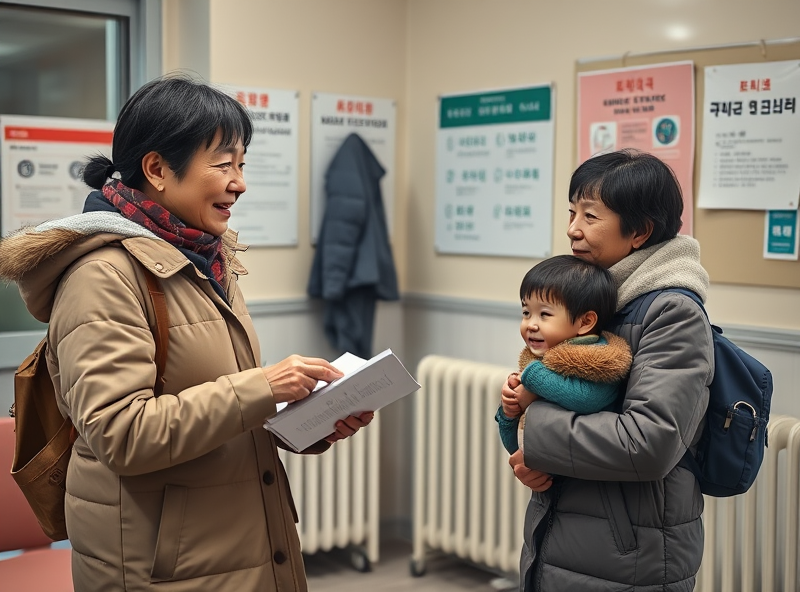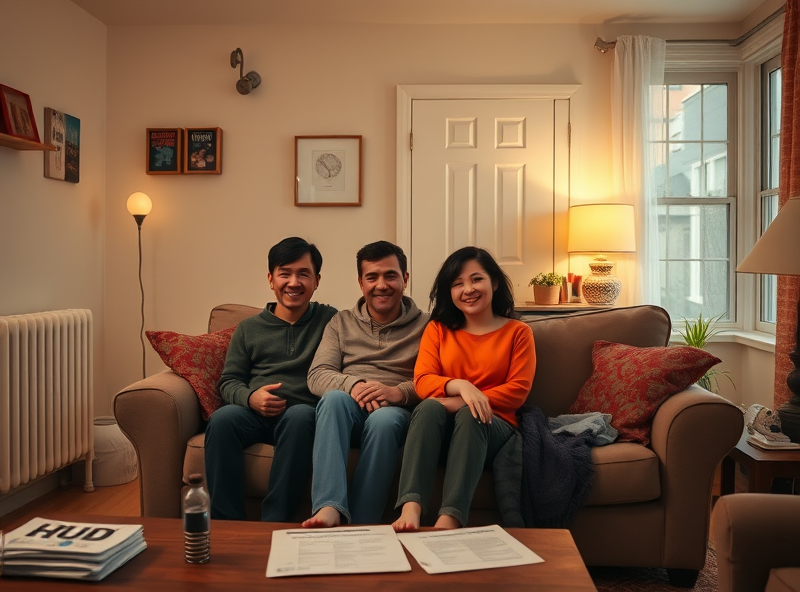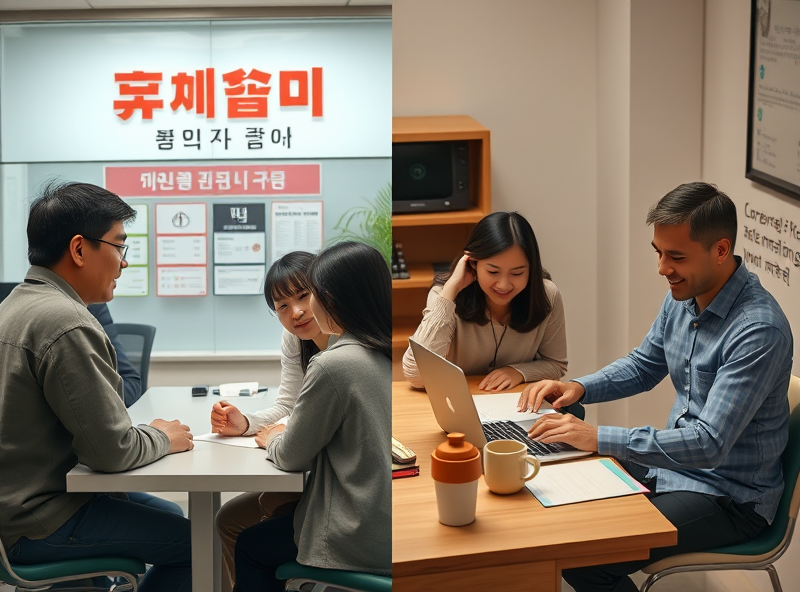
Government Assistance Programs for Low-Income Families 2025
Korea’s Basic Livelihood Security System

The Basic Livelihood Security System (BLSS) in South Korea is a comprehensive government assistance program designed to support low-income individuals and families. Established under the National Basic Living Security Act, this system ensures that all citizens can meet minimum living standards, including food, housing, healthcare, and education.
To qualify for BLSS in 2024, applicants must meet both income and asset criteria. The income threshold is based on the standard median income, and the asset test considers both financial and property holdings. If eligible, beneficiaries receive support in four main categories: livelihood benefits (monthly cash assistance), housing benefits (rent support), medical benefits (full or partial coverage of medical expenses), and education benefits (tuition and school-related expenses for children).
One of the most valuable aspects of the BLSS is its adaptability. For example, in 2024, the Korean government has increased the income threshold to reflect inflation and the rising cost of living. This change allows more families to qualify for assistance. Additionally, the system now offers more personalized support, such as job training and employment services, to help recipients achieve financial independence.
If you or someone you know is struggling financially, it’s worth checking eligibility through the Ministry of Health and Welfare’s official website or visiting a local community center for assistance. These programs are designed not just to provide temporary relief, but to help individuals regain stability and dignity in their lives.
For more information, you can visit the official Ministry of Health and Welfare page: https://www.mohw.go.kr/
Emergency Welfare and Seasonal Aid in Korea

In Korea, emergency welfare and seasonal aid programs are vital lifelines for low-income families facing sudden hardships or seasonal challenges. These programs are part of the broader government assistance framework designed to provide timely support when families encounter unexpected crises such as illness, job loss, or natural disasters.
The Emergency Welfare Support Program (긴급복지지원제도) is one of the most crucial tools in this system. It offers immediate financial assistance for basic living expenses, housing, medical care, and fuel during emergencies. Eligibility is determined based on income, assets, and the nature of the crisis. For example, if a family suddenly loses its main source of income due to an accident or business closure, they may qualify for short-term support.
In addition to emergency aid, Korea also provides seasonal support programs. During the winter months, the government offers heating cost subsidies (연료비 지원) to help vulnerable households cope with increased utility bills. These subsidies are especially important for elderly individuals living alone, families with young children, and people with disabilities.
Local governments often play a key role in administering these programs, ensuring that aid reaches those in need quickly and efficiently. Applications can typically be made through local community centers (주민센터), and the process has been streamlined in recent years to reduce waiting times.
For more detailed information on eligibility and how to apply, you can visit the official Ministry of Health and Welfare website: https://www.mohw.go.kr
These programs not only provide immediate relief but also help prevent long-term poverty by stabilizing families during critical periods. If you or someone you know is struggling, it’s worth checking if you qualify for these supports. They exist to ensure that no one is left behind during difficult times.
U.S. Housing and Utility Support Programs

Housing and utility costs can be a heavy burden for low-income families, but thankfully, several U.S. government programs are designed to help. These programs provide financial assistance, reduce utility bills, and offer housing support to ensure families have a safe and stable living environment.
One of the most well-known programs is the Section 8 Housing Choice Voucher Program, managed by the U.S. Department of Housing and Urban Development (HUD). This program helps low-income families, the elderly, and people with disabilities afford decent, safe, and sanitary housing in the private market. Participants pay a portion of their income toward rent, and the voucher covers the rest. You can learn more and apply through your local Public Housing Agency (PHA).
Another key program is the Low Income Home Energy Assistance Program (LIHEAP), which helps families manage costs associated with heating and cooling their homes. LIHEAP provides grants to help cover utility bills, and in some cases, it also supports weatherization improvements to reduce future energy costs. This program is especially helpful during extreme weather seasons.
Additionally, the Emergency Rental Assistance Program (ERAP), introduced during the COVID-19 pandemic, continues to provide rental and utility support in many states. It assists households that are unable to pay rent or utilities due to financial hardship.
These programs not only offer financial relief but also promote housing stability, which is essential for health, education, and overall well-being. To explore eligibility and apply, visit the official HUD website: https://www.hud.gov/program_offices/public_indian_housing/programs/hcv/about
If you or someone you know is struggling with housing or utility bills, don’t hesitate to look into these resources. They’re here to help you build a more secure and comfortable life.
How to Apply for Support in Korea and the U.S.

Accessing government assistance can be life-changing for low-income families, but the application process may seem overwhelming. Here’s a clear and friendly guide to help you navigate the support systems in both Korea and the United States in 2024.
In South Korea, the primary support program is the Basic Livelihood Security Program (기초생활보장제도). This program provides financial aid, housing support, medical assistance, and education subsidies to eligible low-income households. To apply, you need to visit your local Community Service Center (주민센터) with necessary documents such as proof of income, identification, and household registration. Applications are reviewed based on income and asset criteria set by the Ministry of Health and Welfare. You can find more information and apply online through the official site: https://www.bokjiro.go.kr
In the United States, several federal and state-level programs support low-income families. The most common include SNAP (Supplemental Nutrition Assistance Program), Medicaid, TANF (Temporary Assistance for Needy Families), and Section 8 Housing Assistance. Each program has its own eligibility requirements. For example, to apply for SNAP, you can visit your state’s Department of Human Services website or use the federal portal at https://www.benefits.gov. You’ll typically need to provide proof of income, household size, and residency.
Whether you’re in Korea or the U.S., it’s important to apply as early as possible and keep all documentation up to date. These programs are designed to help families meet basic needs and improve their quality of life. Don’t hesitate to reach out to local welfare offices or community organizations for assistance during the application process.







